How to Buy a Used Tractor
Method 1 of 4:
Inspecting the Tractor
-
 Give the tractor a visual inspection to check for damage and wear. Look over the entire tractor for chipped paint, dents, rust, and other signs of damage. Keep an eye out for mud or dirt that could be a sign that the tractor was poorly treated or maintained. Take note of any issues that you see so you can discuss them with the previous owner.[1]
Give the tractor a visual inspection to check for damage and wear. Look over the entire tractor for chipped paint, dents, rust, and other signs of damage. Keep an eye out for mud or dirt that could be a sign that the tractor was poorly treated or maintained. Take note of any issues that you see so you can discuss them with the previous owner.[1]- While dirt and chipped paint may not affect the performance of the tractor, it can be a sign of deeper problems.
- Check the cab for mud and dirt as well.
-
 Check the hour meter on the tachometer to see how much it was used. The tachometer is a gauge inside the cab of the tractor that provides information such as the speed and RPMs of the engine. Find the tachometer on the dashboard inside of the cab and look for the hour meter on it to find out how many hours the tractor has been used.[2]
Check the hour meter on the tachometer to see how much it was used. The tachometer is a gauge inside the cab of the tractor that provides information such as the speed and RPMs of the engine. Find the tachometer on the dashboard inside of the cab and look for the hour meter on it to find out how many hours the tractor has been used.[2]- An hour reading of around 2,500 is considered a broken-in engine in good condition. Hour readings above 35,000 are considered high mileage for a tractor.
- Hour readings, like the odometer of a car, can be altered by the owner trying to sell the tractor.
-
 Look for spot-painting used to cover up rust on the tractor. Check for freshly painted areas on the tractor and inspect around and beneath the area for any signs of rust. Look for areas of paint that don't match for signs that the paint is being used to cover up scratches, damage, or rust.[3]
Look for spot-painting used to cover up rust on the tractor. Check for freshly painted areas on the tractor and inspect around and beneath the area for any signs of rust. Look for areas of paint that don't match for signs that the paint is being used to cover up scratches, damage, or rust.[3]- A freshly painted tractor doesn't necessarily mean there's any rust or damage, but small spots of paint can mean they're covering up problems.
-
 Examine the wiring for any damage or fraying. Check all of the wires in the cab and around the engine. Look for cuts, cracks, or breaks in the sheathing around the wires as well as any exposed or frayed wires. Look for any wires that were patched up with tape and make sure the tape isn't damaged or peeling.[4]
Examine the wiring for any damage or fraying. Check all of the wires in the cab and around the engine. Look for cuts, cracks, or breaks in the sheathing around the wires as well as any exposed or frayed wires. Look for any wires that were patched up with tape and make sure the tape isn't damaged or peeling.[4]- Damage to wiring on tractors is pretty common over time, but any patches or repairs need be done properly with electrical tape.
- Exposed or frayed wiring is a sign of poor maintenance and is a potential shock hazard.
-
 Turn on the lights and electronics to make sure they're working. Flip on all of the lights on the tractor, including any turn signals or hazard lights to see that they're in working order. Look in the cab and check all of the gauges and displays to see if they're working. Test the radio and any other electronics in the cab as well.[5]
Turn on the lights and electronics to make sure they're working. Flip on all of the lights on the tractor, including any turn signals or hazard lights to see that they're in working order. Look in the cab and check all of the gauges and displays to see if they're working. Test the radio and any other electronics in the cab as well.[5]- If the cab includes a guidance system or GPS display, test it to make sure it comes on.
-
 Inspect the tires for cracks, excessive wear, or damage. A little wear on the tires is to be expected for a used tractor but look for cracking in the rubber and inspect the rims to make sure they aren't bent or damaged. If there is almost no tread left on the tires, they'll need to be replaced, which can affect the price of the tractor.[6]
Inspect the tires for cracks, excessive wear, or damage. A little wear on the tires is to be expected for a used tractor but look for cracking in the rubber and inspect the rims to make sure they aren't bent or damaged. If there is almost no tread left on the tires, they'll need to be replaced, which can affect the price of the tractor.[6]- Bubbles or bulges in the tires are a sign that the tractor was stored outside and wasn't well-maintained.
- Replacement tractor tires can cost up to $30,000.
-
 View the articulation point for metal shards and grease. The articulation point is the pivot joint on the tractor, which is the major moving part and allows you to turn and use the tractor for various tasks. Look at the articulation point beneath the tractor to make sure that it's well-greased and there isn't any rust. Check for small metal shards, which are a sign of wear and improper maintenance.[7]
View the articulation point for metal shards and grease. The articulation point is the pivot joint on the tractor, which is the major moving part and allows you to turn and use the tractor for various tasks. Look at the articulation point beneath the tractor to make sure that it's well-greased and there isn't any rust. Check for small metal shards, which are a sign of wear and improper maintenance.[7]- The location of the articulation point varies depending on the design but is generally located near the front or rear axle of the tractor.
-
 Start the engine, look for leaks, and listen for knocking sounds. Turn on the tractor and check underneath it for oil leaks or other drips. Check the engine and hydraulic lines for dry rot, leaky, or missing hoses. Look for discolored streaks running down the engine for signs of drips and leaks. Listen for any knocking or scratching sounds in the engine while it runs, a sign of damage and wear.[8]
Start the engine, look for leaks, and listen for knocking sounds. Turn on the tractor and check underneath it for oil leaks or other drips. Check the engine and hydraulic lines for dry rot, leaky, or missing hoses. Look for discolored streaks running down the engine for signs of drips and leaks. Listen for any knocking or scratching sounds in the engine while it runs, a sign of damage and wear.[8]- Damage inside of the engine could lead to expensive repairs.
Tractor Tip: Use a stethoscope or place a screwdriver onto the tractor and hold your ear up to it to listen for internal knocking sounds coming from the engine.
-
 Check the oil and fluid levels in the engine. Look at the gauges in the cab to see that the oil and fluid levels are stable. Pull out the oil dipstick on the engine to make sure there's oil and that it isn't cloudy or dirty. Check the coolant and any other fluid levels to make sure there aren't leaks.[9]
Check the oil and fluid levels in the engine. Look at the gauges in the cab to see that the oil and fluid levels are stable. Pull out the oil dipstick on the engine to make sure there's oil and that it isn't cloudy or dirty. Check the coolant and any other fluid levels to make sure there aren't leaks.[9]- Low or empty fluid levels are a sign of poor maintenance or potential leaks.
Method 2 of 4:
Driving the Tractor
-
 Test drive the tractor to see how it handles. Start up the engine and drive the tractor around to get a feel for how it handles and how comfortable it feels to sit in it. Take note of how the seat feels, the grip of the steering, and anything else you notice when you're driving the tractor.[10]
Test drive the tractor to see how it handles. Start up the engine and drive the tractor around to get a feel for how it handles and how comfortable it feels to sit in it. Take note of how the seat feels, the grip of the steering, and anything else you notice when you're driving the tractor.[10]- You're likely to spend lots of time in the tractor if you plan to use it for fieldwork, so it needs to be comfortable!
- Pay attention to how easy or difficult it is for you to get in and out of the tractor as well.
-
 Turn the steering left and right to make sure it's tight. While you're test driving the tractor, use the steering to turn it in different directions to make sure it's functioning properly. Check for looseness in the steering, a sign that the steering pins are damaged.[11]
Turn the steering left and right to make sure it's tight. While you're test driving the tractor, use the steering to turn it in different directions to make sure it's functioning properly. Check for looseness in the steering, a sign that the steering pins are damaged.[11]- If the steering is difficult, the steering pins or mechanisms may need to be greased or may be damaged.
- Damaged steering pins need to be replaced in order for the tractor's steering to function properly.
-
 Check the clutch and brakes when you drive. If the tractor has an automatic transmission, make sure it doesn't lurch or you don't hear scraping sounds when it changes into a higher gear as you drive. If it's a standard transmission, shift the gears as you drive and listen for scraping sounds that would indicate damage or wear. Press on the brakes while you drive to make sure they're working and there isn't a screeching noise.[12]
Check the clutch and brakes when you drive. If the tractor has an automatic transmission, make sure it doesn't lurch or you don't hear scraping sounds when it changes into a higher gear as you drive. If it's a standard transmission, shift the gears as you drive and listen for scraping sounds that would indicate damage or wear. Press on the brakes while you drive to make sure they're working and there isn't a screeching noise.[12]- Some wear and tear is normal for used tractors, but premature or early wear could be a sign of poor maintenance, which could mean there are other issues with the tractor.
- Worn brakes can be replaced by a tractor mechanic.
-
 Start up the PTO and check to make sure it's rotating smoothly. The power take-off, or PTO, is a rotating shaft that powers attachments that you can hook up to your tractor, such as grain carts, augers, or mowers. Turn on the PTO using the lever in the cab and inspect it while it's on to make sure it's rotating smoothly and there aren't any scratching or knocking sounds.[13]
Start up the PTO and check to make sure it's rotating smoothly. The power take-off, or PTO, is a rotating shaft that powers attachments that you can hook up to your tractor, such as grain carts, augers, or mowers. Turn on the PTO using the lever in the cab and inspect it while it's on to make sure it's rotating smoothly and there aren't any scratching or knocking sounds.[13]- Damage or problems with the PTO can render the tractor useless if you can't use attachments for your tasks.
Tractor Tip: Have a friend or the seller drive the tractor around slowly so you can see the PTO rotate to make sure it's working properly while the tractor is in motion.
-
 Raise the hydraulics to make sure the pump is functioning. With the tractor still, raise the loader or the hydraulic lift and hold it steady to see that it's functioning and can support the weight. Listen for air leaking out near the hydraulics to make sure there aren't leaks or poor seals, which are costly to repair.[14]
Raise the hydraulics to make sure the pump is functioning. With the tractor still, raise the loader or the hydraulic lift and hold it steady to see that it's functioning and can support the weight. Listen for air leaking out near the hydraulics to make sure there aren't leaks or poor seals, which are costly to repair.[14]- The location of the hydraulics varies based on the tractor design, but they're the moving parts on the tractor that can raise and lift.
Method 3 of 4:
Pricing Used Tractors
-
 Find the price of a new tractor of the same make and model. Search online or consult a catalog of new tractors for sale. Identify the selling price of tractors that have not been used at all so you have a maximum cost for the make and model of the used tractor that you're considering.[15]
Find the price of a new tractor of the same make and model. Search online or consult a catalog of new tractors for sale. Identify the selling price of tractors that have not been used at all so you have a maximum cost for the make and model of the used tractor that you're considering.[15]- Look at tractor dealership websites for the prices of new tractors.
- Search the manufacturer's websites for the costs of brand new tractors.
-
 Look up the prices of similar used tractors for comparison. Look at listings online or at other farm auctions of the same or similar types of used tractors to find out how much they're being sold for. Compile a list of similar used tractor's asking prices so you can reference them when you try to purchase one.[16]
Look up the prices of similar used tractors for comparison. Look at listings online or at other farm auctions of the same or similar types of used tractors to find out how much they're being sold for. Compile a list of similar used tractor's asking prices so you can reference them when you try to purchase one.[16]- If you can't find the exact same make and model, use the same type or the same year. For example, if you can't find the same John Deere Utility Tractor that was manufactured in 2007, look up similar utility tractors made the same year for comparison.
-
 Create a price range with new and used tractors of the same type. Use the price of a new tractor as the maximum cost. Then, take the asking prices of used tractors to create a price range you can use as a reference when you're negotiating prices or shopping for a used tractor.[17]
Create a price range with new and used tractors of the same type. Use the price of a new tractor as the maximum cost. Then, take the asking prices of used tractors to create a price range you can use as a reference when you're negotiating prices or shopping for a used tractor.[17]Tractor Tip: Check the descriptions in used tractor listings for mentions of wear and tear such as brakes or rust to use them as references for any wear and tear on the used tractor you're considering.
-
 Take into account any wear and tear on the used tractor. If the used tractor you're considering has chipped paint and a lot of hours on it, then the value of the tractor is lower. Look at the prices of the used tractors on the lower end of your range and use them as references when you're negotiating prices.[18]
Take into account any wear and tear on the used tractor. If the used tractor you're considering has chipped paint and a lot of hours on it, then the value of the tractor is lower. Look at the prices of the used tractors on the lower end of your range and use them as references when you're negotiating prices.[18]- Factor in the costs of repairs such as repainting or replacing tires when you're pricing used tractors.
-
 Have the used tractor appraised to find it's true value. Search online for an appraisal company near you that you can hire to come inspect the used tractor you're considering purchasing. You can also order an appraisal through an online company such as Iron Solutions or Fastline, which will determine the true value of a used tractor so you can be sure you're paying a fair price.[19]
Have the used tractor appraised to find it's true value. Search online for an appraisal company near you that you can hire to come inspect the used tractor you're considering purchasing. You can also order an appraisal through an online company such as Iron Solutions or Fastline, which will determine the true value of a used tractor so you can be sure you're paying a fair price.[19]- Appraisals can be expensive, but if you're planning to purchase an expensive used tractor, it may be worth the investment to make sure you're getting a fair deal.
Method 4 of 4:
Purchasing a Used Tractor
-
 Search for the tractor that fits your needs and your budget. Look online or through catalogs to find the tractor that's best suited for the tasks you need done. For example, tractors that are designed to till large fields will have a different look and price than one that's meant to be used to pull mowers. Identify which type of tractor works best for you before you start looking to purchase a used one.[20]
Search for the tractor that fits your needs and your budget. Look online or through catalogs to find the tractor that's best suited for the tasks you need done. For example, tractors that are designed to till large fields will have a different look and price than one that's meant to be used to pull mowers. Identify which type of tractor works best for you before you start looking to purchase a used one.[20]- Knowing what you're looking for will help you narrow down your search.
-
 Visit a tractor dealership to purchase a used tractor with a warranty. Search online for tractor dealerships near you. Purchase a used tractor from a dealership that comes with a guarantee of quality and includes a warranty that will cover the costs of any damage that occurs to the tractor for a period of time.[21]
Visit a tractor dealership to purchase a used tractor with a warranty. Search online for tractor dealerships near you. Purchase a used tractor from a dealership that comes with a guarantee of quality and includes a warranty that will cover the costs of any damage that occurs to the tractor for a period of time.[21]- Buying a tractor from a dealership may be more expensive than an auction or buying straight from the owner, but dealerships can be held accountable if the tractor breaks down suddenly after you buy it.
Tractor Tip: Factory dealerships will be able to service and repair your tractor if you need it.
-
 Go to farm auctions to inspect and bid on used tractors. Search online or look through newspaper listings for farm auctions near you. Go to the farm auction to view and inspect the tractors that are being sold. When a tractor you want to purchase is up for auction, bid enough money to buy it.[22]
Go to farm auctions to inspect and bid on used tractors. Search online or look through newspaper listings for farm auctions near you. Go to the farm auction to view and inspect the tractors that are being sold. When a tractor you want to purchase is up for auction, bid enough money to buy it.[22]- Many auctions will deliver the tractor to your home or farm.
- Farm auctions charge additional fees in order for you to attend and place your bids.
- Most farm auctions will also have the tractors appraised to find a range that they're worth.
-
 Look through classifieds for used tractors you can buy. Check the classified section of your local newspaper for listings from owners who want to sell their used tractors. Go to an online classified website such as Craigslist for used tractor listings over a greater search area. Contact the seller using the information they provide in the listing to view and potentially purchase the tractor from them.[23]
Look through classifieds for used tractors you can buy. Check the classified section of your local newspaper for listings from owners who want to sell their used tractors. Go to an online classified website such as Craigslist for used tractor listings over a greater search area. Contact the seller using the information they provide in the listing to view and potentially purchase the tractor from them.[23]- Be wary of buying tractors from owners without fully inspecting and testing them first.
- Online classifieds will often have pictures and additional information you can use to help narrow down your search.
3.5 ★ | 2 Vote
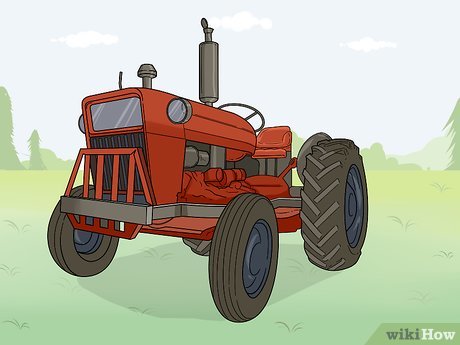
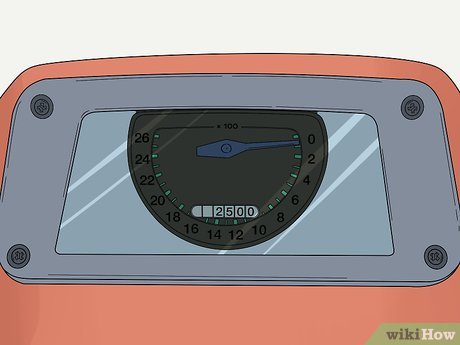
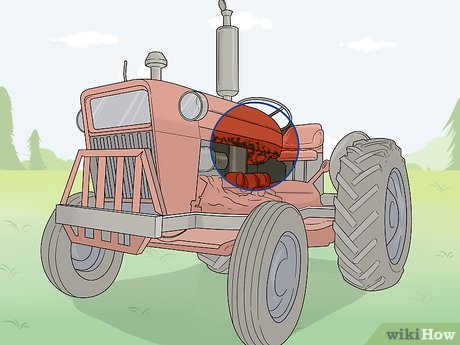
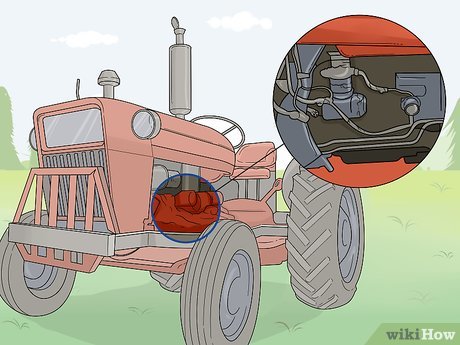
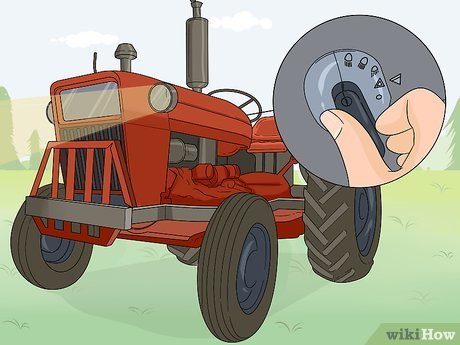
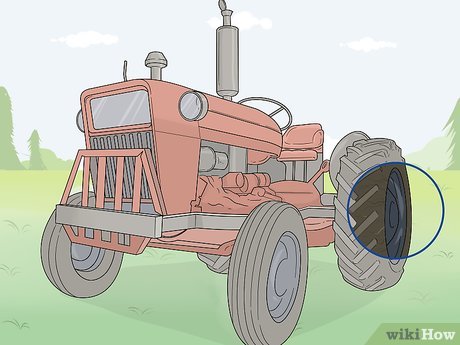
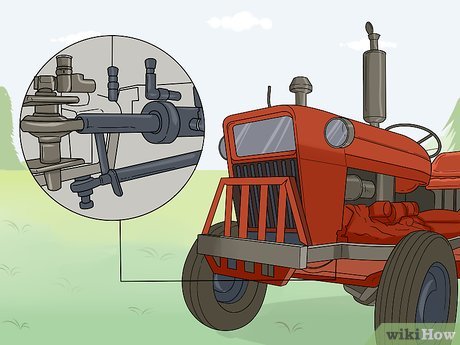
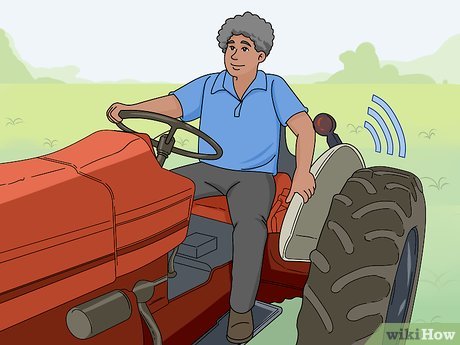
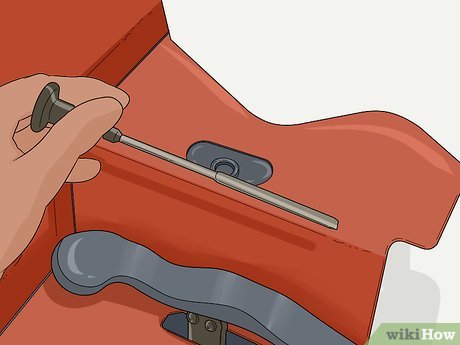
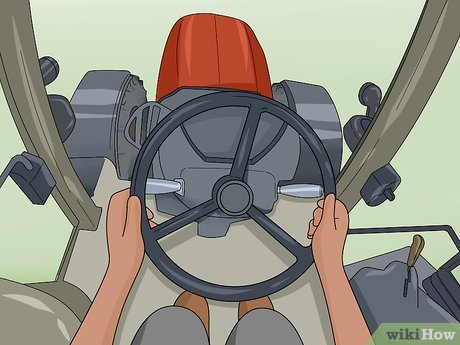
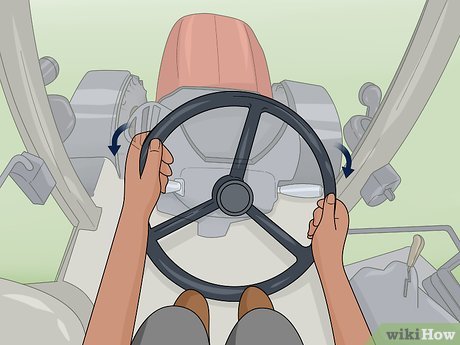
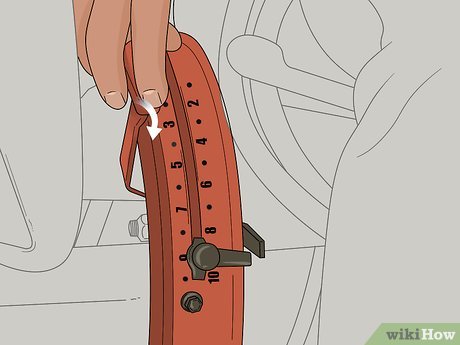
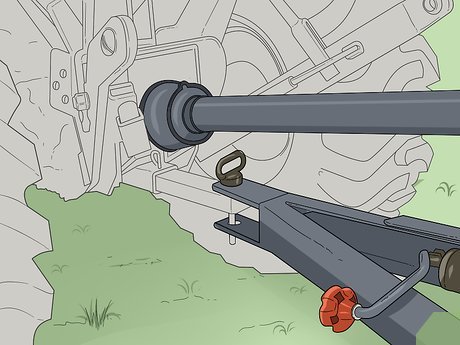
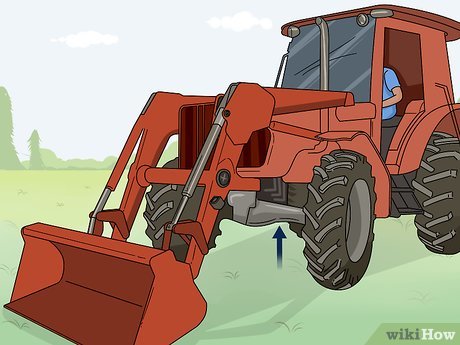
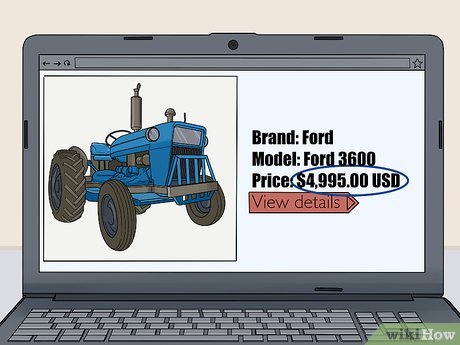
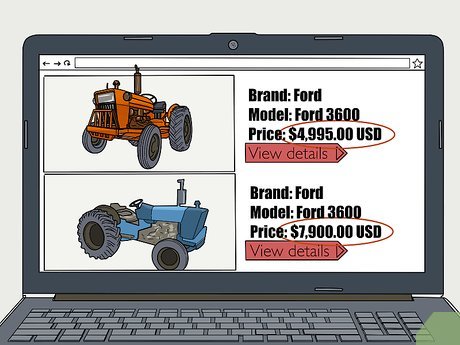
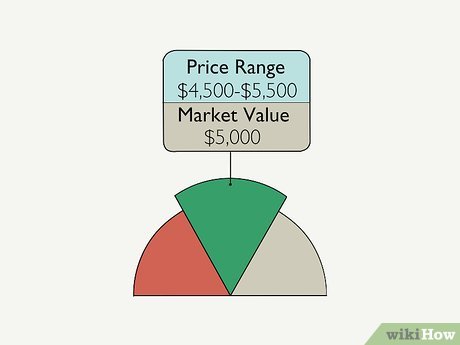
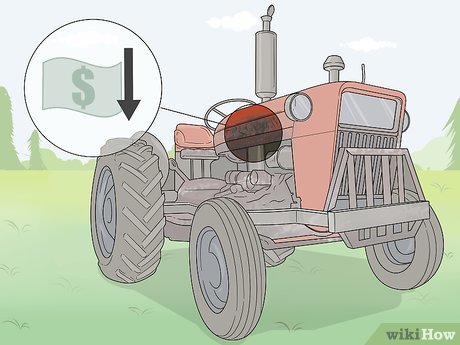
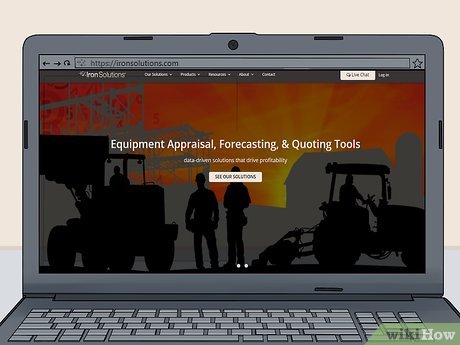
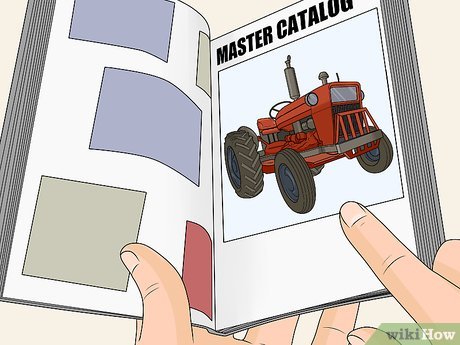
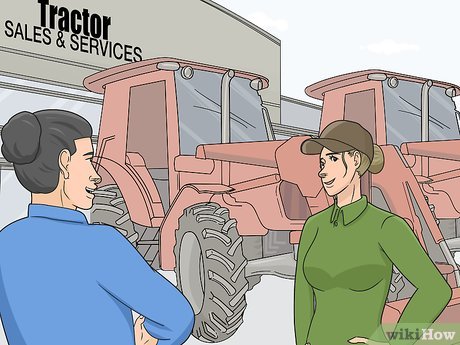
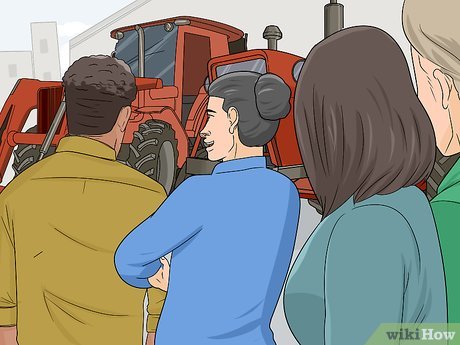
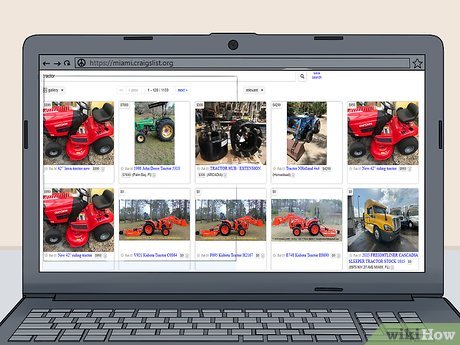
 How to Remove a Tractor Tire from the Rim
How to Remove a Tractor Tire from the Rim How to Replace Brakes on a John Deere 5105 Tractor
How to Replace Brakes on a John Deere 5105 Tractor How to Drive a Farm Tractor
How to Drive a Farm Tractor How to Maintain a Tractor
How to Maintain a Tractor How to Fill Tractor Tires with Water
How to Fill Tractor Tires with Water How to Test Drive a Used Car
How to Test Drive a Used Car